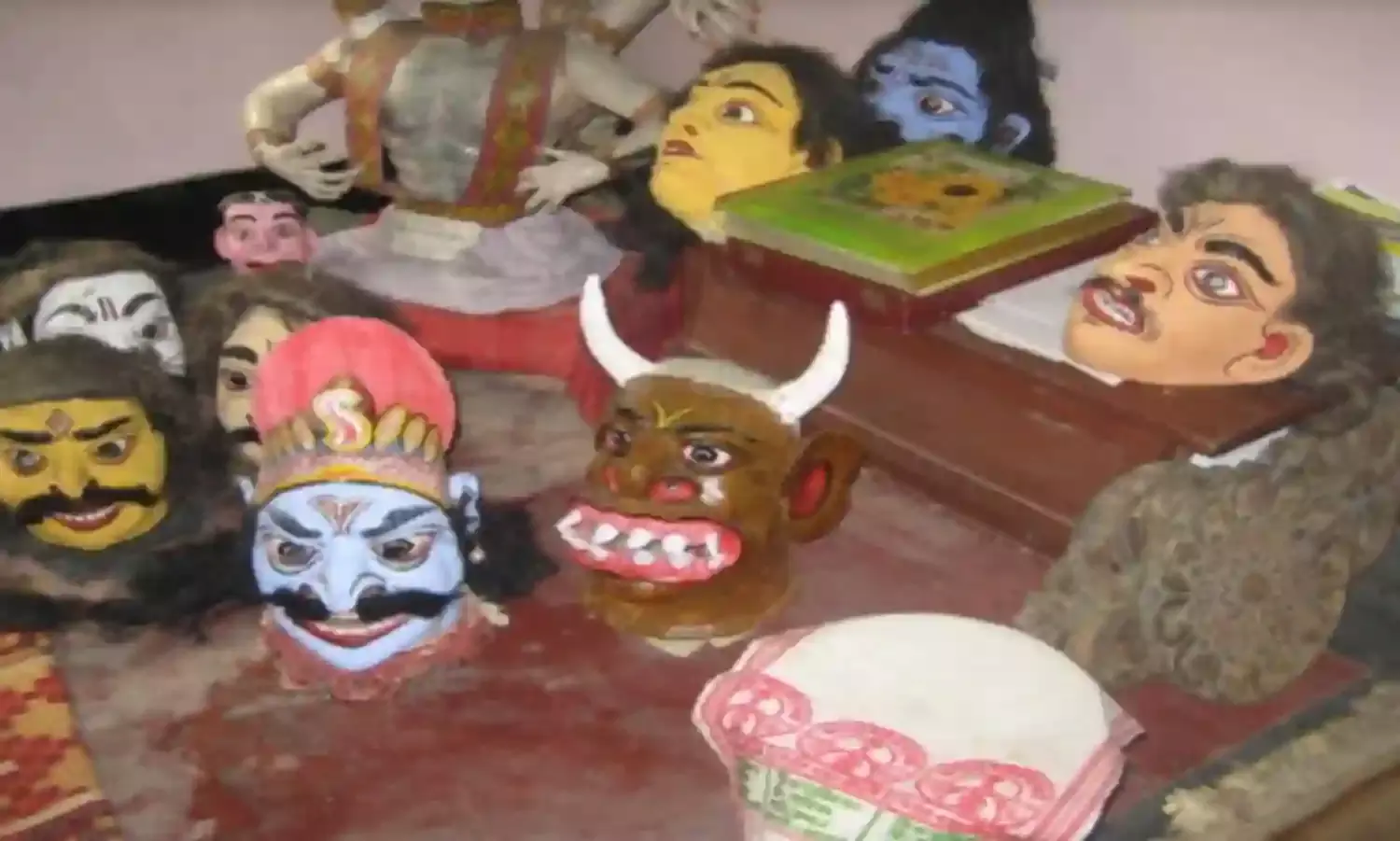The Art of Masks Takes a Hit in Assam
RANJITA BISWAS on the unique art of mask making.
In the river island of Majuli in Assam thrives a unique indigenous mask making art. Mask art has been prevalent in different cultures of the world for centuries, especially among indigenous communities.
In Assam, the art of making and using masks harks back to a Vaishnavite tradition traced back to the Middle Ages, nourished in Majuli.
Majuli, the largest inhabited river island in the world, lies in the lap of the mighty Brahmaputra in upper Assam. Apart from its geographical importance, Majuli also plays a significant role in the cultural and social life of people in the Assam Valley. This is where Saint Sri Sankardeva (1449-1568) introduced the Vaishnavite strand of bhakti cult which became a major movement in the valley later.
Srimanta Sankardeva was a guru, social-reformer and creative genius all rolled into one. The hub of his movement was the satra, Vaishnavite ashram , which, apart from being a platform for religious discourses was also a place where cultural and creative forums flourished.
As D. Nath writes in the book, The Majuli Island, “…it is almost an island of the traditional Assamese life and culture. The indigenous art and crafts, the music and dance forms, and the food and dress habits of the indigenous Assamese have considerably survived the stresses and strains of time and circumstances in Majuli.”
There are around 22 satras in Majuli today though there were many more previously. Among them, Kamalabari, Auniati , Gorumurah, Dakhinpat and Samaguri satras are more famous.
Sankardeva wanted a total social change and not just a turnaround in religious beliefs and practices so far steeped in elaborate rituals. He was a great artiste too. To get across his message, he ingenuously used the medium of art and culture. For that purpose, he wrote plays on the life of Krishna to be performed in bhaonas (traditional theatre) in villages.
This proved effective as most of the people were illiterate but they could easily relate to the performances and the message of devotion to Lord Krishna.
The introduction of the namghar, a village chapel cum congregation point, was a stroke of genius. It is not confined to the satras alone; every village or community, even towns and cities, have a namghar which serves as a community hall as well. It also serves as a village theatre hall.
The stories in the bhaonas are mostly episodes from the Ramayana and the life of Krishna. Kaliya Daman (taming of the snake king), Ram Vijay (victory of Ram), Narakasura Vadh (killing of demon Naraka) are some popular plays.
The need for staging the plays also opened up scope for local textile and crafts to get a boost. The bhaonas needed actors to put on masks to enact the roles - whether a Ravana, a Garuda or a Hanuman, even the much-maligned Suparnakha, sister of Ravana.
The mask making tradition thrived using locally available materials like bamboo, cane and a special kind of earth.
But today, the art has all but disappeared. Only at the Natun Samaguri satra, the family of the Satradhikar (head of the satra) has Kosho Kanta Dev Goswami, a Lalit Kala Akademi winner, continued to produce the masks in the age-old style under his tutelage. He rues that the skill and patience, not to talk about a sense of finesse and knowledge of the characters necessary for making the masks, are lacking in these quick-result seeking times.
As you enter the Satradhikar’s house you would be greeted by the walls displaying various masks — heads of characters from the epics.
Goswami demonstrates how the first stage of mask making is in progress. First, he makes a grid of a stripped bamboo framework. At this minimal stage it almost resembles a face guard. Strips of cloth dipped in the clay earth of the Brahmaputra are then draped over it and dried.
To shape the face contours, the ridges and body parts like nose, lips, etc., a paste of paper-pulp, clay, gum and cow-dung is applied. For hair, beard and facial accessories, jute and bark are used. Once this stage is completed, the rough edges are filed with a wooden emery board to give a smooth finish. Finally the mask is painted, usually with vegetable dyes, keeping to the character’s individuality.
Goswami informs that the masks can be of different kinds depending on the bhaona’s characters. If it is meant for the face only, it is called mukha ; if it covers face and the shoulder, it is called lotokai mukha and, it is called cho-mukha if it covers the whole body. Sometimes he also innovates and improvises, though sticking to the tradition. For example, he has introduced a jaw movement in a character like Hanuman to make it more interesting.
However, one cannot avoid feeling a sense of gloom in the picturesque island because there is an apprehension that these satras and their unique heritage could cease to be in the near future.
Erosion has taken a toll on Majuli for many years now and some experts say that the island might disappear from the face of the earth altogether. The devastating flood in the summer of 2012 has almost split Majuli into two and some experts predict that the island may not survive long at this rate of erosion and flooding.





